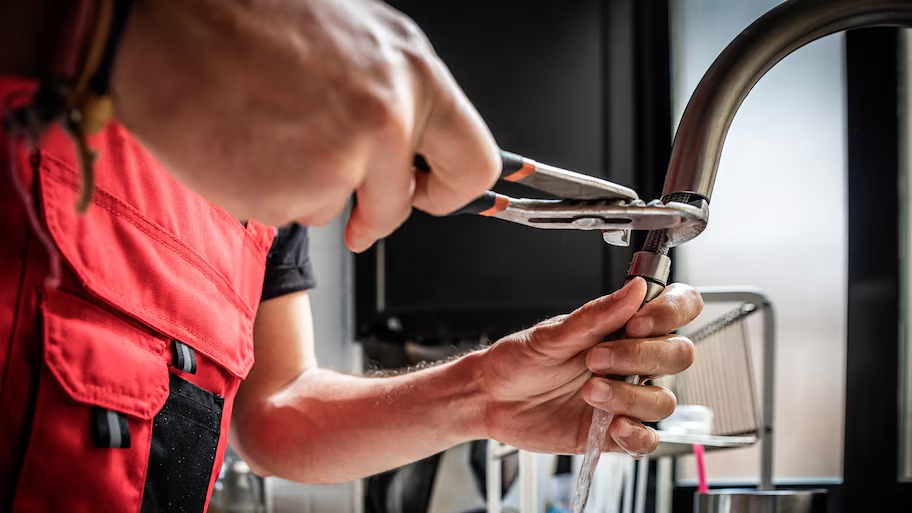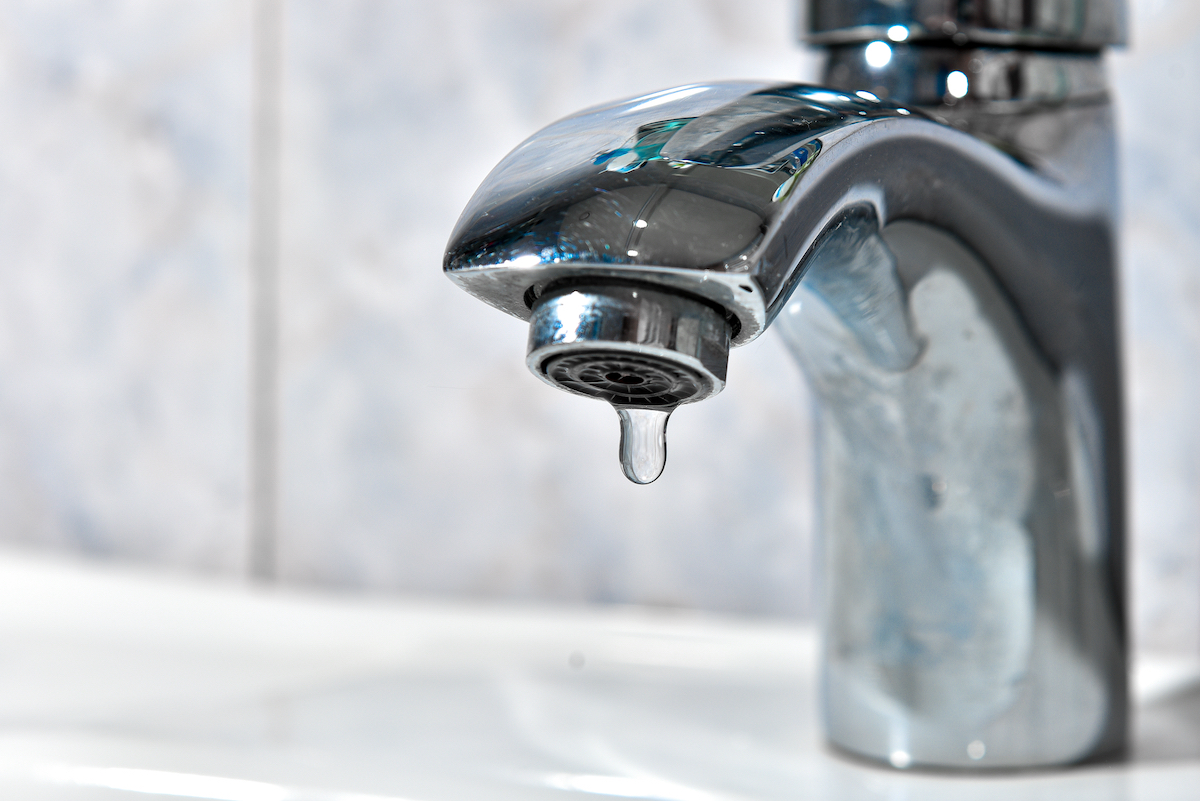What It's Needed to Fix a Faulty Faucet
What It's Needed to Fix a Faulty Faucet
Blog Article
We've unearthed this great article on How to Fix a Dripping or Leaky Faucet down the page on the web and figured it made sense to quickly share it with you on this site.

Trickling faucets may feel like a minor aggravation, yet their impact surpasses simply the annoyance of the noise. From drainage to sustaining unnecessary economic prices and health and wellness dangers, neglecting a leaking tap can result in numerous repercussions. In this write-up, we'll look into why it's important to address this typical family concern immediately and efficiently.
Wastage of Water
Ecological Effect
Dripping taps contribute substantially to water wastage. According to the Epa (EPA), a solitary faucet leaking at one drip per secondly can lose more than 3,000 gallons of water annually. This not only stress water sources however additionally influences environments and wildlife based on them.
Financial Costs
Boosted Water Costs
Beyond the ecological impact, leaking faucets can blow up water costs considerably. The built up waste in time equates right into greater utility expenditures, which might have been avoided with timely repair work.
Potential Home Damages
Furthermore, long term leaking can bring about harm to components and surfaces surrounding the tap. Water accumulation can trigger staining, corrosion, and even structural problems if left ignored, leading to additional repair service costs.
Health and wellness Worries
Mold And Mildew and Mold Development
The constant existence of moisture from a dripping tap produces an excellent environment for mold and mildew development. These fungis not only endanger interior air quality but additionally posture wellness dangers, specifically for individuals with respiratory problems or allergic reactions.
Waterborne Conditions
Stationary water in leaking faucets can end up being a breeding ground for germs and various other virus, raising the risk of waterborne illness. Pollutants such as Legionella germs thrive in stationary water, possibly bring about major diseases when ingested or inhaled.
DIY vs. Professional Repair work
Benefits and drawbacks of DIY Repair
While some may try to repair a leaking faucet themselves, DIY repairs come with their very own collection of difficulties. Without proper knowledge and devices, do it yourself efforts can aggravate the problem or lead to incomplete repair work, prolonging the trouble.
Advantages of Working With a Specialist Plumber
Working with an expert plumber guarantees that the underlying source of the dripping faucet is dealt with properly. Plumbing technicians have the expertise and equipment to detect and fix tap issues successfully, conserving time and reducing the danger of additional damages.
Step-by-Step Guide to Taking Care Of a Dripping Tap
Tools Needed
Prior to attempting to deal with a dripping tap, gather the needed devices, including an adjustable wrench, screwdrivers, substitute parts (such as washing machines or cartridges), and plumber's tape.
Common Tap Issues and Their Solutions
Identify the kind of tap and the particular concern causing the drip. Common problems consist of worn-out washers, rusty valve seats, or defective O-rings. Describe producer directions or on the internet tutorials for step-by-step advice on fixings.
Preventive Measures
Routine Upkeep Tips
To avoid dripping taps, carry out regular maintenance such as cleaning aerators, examining for leakages, and replacing worn-out parts immediately. Additionally, think about setting up water-saving gadgets or updating to a lot more reliable components.
Value of Prompt Repair Works
Attending to leaking faucets as quickly as they're observed stops additional water waste and prospective damages, eventually conserving both water and cash in the future.
Effect On Home Value
Understanding of Well-Maintained Property
Maintaining a property in good condition, consisting of addressing upkeep issues like trickling taps, enhances its viewed worth and worth amongst potential buyers or occupants.
Impact on Resale Worth
Properties with well-maintained plumbing fixtures, consisting of taps, command greater resale worths in the property market. Attending to dripping taps can contribute to a favorable perception throughout home examinations and settlements.
Ecological Duty
Individual Payment to Preservation
Taking obligation for taking care of leaking taps straightens with broader efforts towards water conservation and ecological sustainability. Every person's actions collectively make a significant effect on maintaining priceless resources.
Sustainable Living Practices
By focusing on timely repair services and embracing water-saving habits, people add to lasting living practices that benefit both existing and future generations.
Conclusion
Attending to a dripping faucet surpasses plain convenience; it's a crucial step toward saving water, reducing monetary prices, and safeguarding health and wellness and building. Whether via DIY repairs or expert support, doing something about it to take care of trickling taps is a tiny yet impactful means to promote accountable stewardship of sources and add to a much healthier, much more lasting future.
How to Fix a Leaky Faucet: Step-by-Step Repair Guide
A leaky faucet may seem like a simple annoyance, but if it's not fixed promptly, that leak could cost hundreds to potentially thousands. From water damage to mold, mildew, and high water bills, even a tiny leak can be catastrophic if left unattended. Damage like this can even affect the overall value of your home, so it's important to take the right approach for leaky faucet repair. You may need the help of a plumber in some cases, but we've got a few tips you can try on how to fix a leaky faucet before calling the pros.
Four Faucet Types
When you're learning how to fix a leaky faucet, the first step is knowing what kind of faucet you're working with! There are four common types.
Cartridge Faucets
Cartridge faucets come in one- or two-handled varieties. In one-handled cartridge faucets, hot and cold water combines in a single cartridge. In the two-handled versions, hot and cold water are controlled separately and mixed in the faucet.
Ball Faucets
Ball faucets have a single lever you push up and down to adjust the pressure and rotate to change the temperature. A slotted metal ball controls the amount of water allowed into the spout.
Compression Washer Faucets
They're the oldest type of faucet, but they're still used in many homes — especially older ones. Compression faucets have two separate handles that, when turned, raise or lower the washer that seals a water valve. This valve stops water from flowing through the faucet when it is turned off.
Disc Faucets
Disc faucets rarely need to be repaired due to their maintenance-free design. The water flow is controlled by two discs — the upper one raises and lowers against a fixed lower disc, creating a watertight seal. If your disc faucet starts leaking, you may need to replace the seals or clean residue buildup from the inlets.
Fixing a Leaky Faucet
Step 1: Turn Off the Water
Whether you're learning how to fix a leaky bathtub faucet or how to fix a leaky kitchen faucet, always turn off the water supply to your working area when you're fixing a leak. The last thing you want is a flood added to your list of things to fix.
Look for the shutoff valves below your sink or around the tub and turn them clockwise to stop the water flow. If your faucet doesn't have shutoff valves, you may need to turn off the water for the whole house. Check to make sure it's off by turning the faucet on. If nothing comes out, you're ready to start the repair.
Step 2: Take Apart the Faucet
How you disassemble your faucet depends on the type of fixture you have. You can use a flathead screwdriver to remove the caps on top of the handle or handles for cartridge and compression faucets. Inside, you should see handle screws. Unscrew these with a screwdriver to remove the handle.
Disc- and ball-style faucets will typically have an inlet screw near the handle, and removing that will reveal the interior of the faucet.
Detach the Valve Stem
For cartridge- and compression-style faucets, you'll see the inner valve stem or cartridge once you remove the faucet handles. If you have a compression faucet, unscrew the brass valve stem. If you have a cartridge faucet, pull out the cartridge. If your cartridge has been in place for a while, it may require some tools or extra force to remove it due to mineral deposits.
Examine and Replace Parts
Once you've removed the parts, check them out to confirm what needs to be replaced. You may see corroded rubber washers, O-rings, stems, or cartridges. On a ball-style faucet, check the seats and springs for damage.
If you need to repair a leaky disc faucet, check the inlet and seals on the lower disc.
Once you determine what parts must be replaced, visit your local hardware store. Bring the damaged parts with you to ensure you can purchase the correct components to replace them.
Clean Valves and Faucet Cavity
If you've removed a stem or cartridge, you may notice mineral buildup in the faucet's threads. Use white vinegar to clean the valve seat by soaking it for a few minutes, then scrub it away with a soft toothbrush and rinse with warm water. You can also clean the interior of the faucet in the same way.
Reassemble the Faucet
Once your faucet is cleaned and the required parts have been replaced, it's time to reassemble it. Put the pieces back together and slowly turn the water supply back on. Doing this slowly is crucial because too much initial water pressure can damage the new hardware you've just installed.
https://homewarranty.firstam.com/blog/how-to-fix-leaky-faucet

I'm certainly very curious about and I really hope you liked the new post. Sharing is caring. Helping people is fun. Thank-you for your time spent reading it.
Report this page